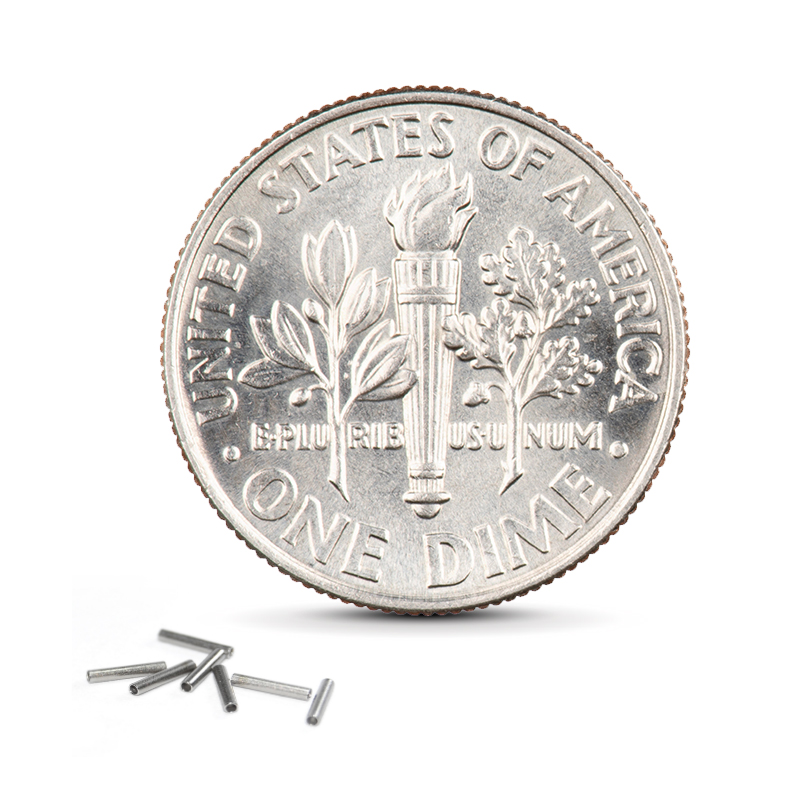Patients and Care Givers | Types of Cancer | Prostate | Treatment Options
Treatment Options
If the PSA and DRE screening detected prostate cancer, this diagnosis is not the end. The 5-year relative survival rate for prostate cancer patients on average is greater than 90%.1
My outlook on life after treatment is pretty positive based on the numbers. You can’t argue with them. The 5-year data is great."
David Mitchell

My outlook on life after treatment is pretty positive based on the numbers. You can’t argue with them. The 5-year data is great."
David
While some patients might need treatment that requires early attention, there are treatment options available from no treatment at all to minimally invasive procedures to in-patient procedures. Below is a brief description of treatment options you should ask your doctors and people within your community about. Gain a clear understanding of the short and long-term side effects to be expected with each option to determine the best course of treatment for you.
Download our guide with suggested questions to ask before you decide which treatment option is best for your health and lifestyle.
Watchful Waiting and Active Surveillance2
Watchful waiting is when a patient’s condition is closely watched but no treatment is given unless symptoms appear or change. Active surveillance is focused on carefully monitoring an individual for signs of prostate cancer progression through PSA blood tests, repeat prostate biopsies, and MRI scans. During this period, no prostate cancer treatments are performed.
Hormone Therapy3
Androgen Deprivation Therapy (ADT) involves administering medications to lower testosterone levels, inhibiting the growth of cancer cells over time. Depending on patient factors, ADT, or hormone therapy, may be used in conjunction with other treatment options like brachytherapy, external radiation, and/or surgery.
External Beam Radiation4
External radiation, often referred to as external beam radiation therapy, uses high-energy X-rays from a machine that are externally directed at the prostate gland to destroy cancerous tissue. This treatment is a non-invasive, outpatient procedure that is delivered daily over the course of several weeks. In cases of high-risk disease, external beam radiation therapy may be used in conjunction with brachytherapy.
Due to the non-invasive method of this procedure, the high energy X-rays must travel through non-target tissue (such as skin and other organs) to reach the prostate gland. This can lead to common side effects such urinary irritation (such as urinary urgency and frequent urination during the day and at night), impotence (erectile dysfunction), and bowel irritation.
Prostate Seed/Low-Dose Rate (LDR) Brachytherapy
Low-Dose Rate Brachytherapy, sometimes referred to as seed therapy, internal radiation therapy, or interstitial radiation, is a form of cancer treatment where small low-dose radioactive seeds are implanted into the treatment site to target and destroy malignant tissue while minimizing exposure to healthy tissue.5 Due to the targeted nature of radioactive seed implantation, there is less radiation dose to surrounding structures, such as the bladder and rectum as compared to external beam radiation therapy.6 This can result in fewer long term side effects for patients who choose LDR brachytherapy.7 For prostate cancer, the seeds are small, about the size of a grain of rice, and are permanently implanted directly into the prostate, around, or in the site of the tumor. Generally, brachytherapy treatment is a minimally invasive outpatient procedure so most patients can go home the same day and return to normal activities the next day.5
My physician advised, that in order to maintain the type of lifestyle I’m living, being able to get out and play golf 3 days a week, he recommended this course of treatment as the most viable to keep you doing what you been doing. (I chose prostate seeds) almost immediately … Less intrusive, no hospital stay."
Amos Tingle
I was relieved to hear of this treatment option .... It was better than having a tooth pulled or a root canal. I’d rather seeds implanted than to have a tooth pulled or a root canal. It was no big deal.”
David
Over time, the implanted seeds deliver a prescribed dose of radiation directly to the cancerous cells. While the seeds are delivering therapy to the treatment site, patients can continue to enjoy their typical lifestyle activities. Typically, within several weeks, the low-dose radiation emitted from the seeds diminishes and the harmless seeds are permanently left in place.
Depending on diagnosis and patient factors, brachytherapy may be used alone or in conjunction with other therapies. Some patients may experience short-term side effects such as frequent, urgent, or uncomfortable urination. These symptoms typically decrease in severity and occurrence within a few months, due to the seeds losing their radioactive strength over time.5
Prostate Seed/Low-Dose Rate (LDR) Brachytherapy
Low-Dose Rate Brachytherapy, sometimes referred to as seed therapy, internal radiation therapy, or interstitial radiation, is a form of cancer treatment where small low-dose radioactive seeds are implanted into the treatment site to target and destroy malignant tissue while minimizing exposure to healthy tissue.5 Due to the targeted nature of radioactive seed implantation, there is less radiation dose to surrounding structures, such as the bladder and rectum as compared to external beam radiation therapy.6 This can result in fewer long term side effects for patients who choose LDR brachytherapy.7 For prostate cancer, the seeds are small, about the size of a grain of rice, and are permanently implanted directly into the prostate, around, or in the site of the tumor. Generally, brachytherapy treatment is a minimally invasive outpatient procedure so most patients can go home the same day and return to normal activities the next day.5
My physician advised, that in order to maintain the type of lifestyle I’m living, being able to get out and play golf 3 days a week, he recommended this course of treatment as the most viable to keep you doing what you been doing. (I chose prostate seeds) almost immediately … Less intrusive, no hospital stay."
Amos Tingle
I was relieved to hear of this treatment option .... It was better than having a tooth pulled or a root canal. I’d rather seeds implanted than to have a tooth pulled or a root canal. It was no big deal.”
David Mitchell

Over time, the implanted seeds deliver a prescribed dose of radiation directly to the cancerous cells. While the seeds are delivering therapy to the treatment site, patients can continue to enjoy their typical lifestyle activities. Typically, within several weeks, the low-dose radiation emitted from the seeds diminishes and the harmless seeds are permanently left in place.
Depending on diagnosis and patient factors, brachytherapy may be used alone or in conjunction with other therapies. Some patients may experience short-term side effects such as frequent, urgent, or uncomfortable urination. These symptoms typically decrease in severity and occurrence within a few months, due to the seeds losing their radioactive strength over time.5
High Dose Rate (HDR) Radiation4
Similar to LDR Brachytherapy, HDR is a temporary type of brachytherapy treatment that involves placing radioactive sources in the prostate and delivering a high dose of radiation through tubes connected to needles positioned in the prostate. After a few minutes, the radioactive sources are removed.
Surgery
A prostatectomy (done with or without the assistance of a robot) is an invasive, surgical operation that typically involves the removal of the entire prostate gland (radical prostatectomy) and requires a hospital stay. After surgery, most patients return to normal activities within 3 to 5 weeks. While this procedure is aimed at removing all traces of cancer, some malignant tissue may be left resulting in a potential prostate cancer recurrence. Removal of the prostate gland does result in long-term side effects, primarily incontinence and impotence.8
Both prostate brachytherapy and surgery for prostate cancer can have side effects, but the specific side effects will depend on the individual patient and the specific treatment they receive.
My partner, Dave, talked to a lot of others and the majority had prostate removal … Initially, I was planning on surgery because (brachytherapy) was not presented as an option. There was a knowledge gap there, but we lucked out.”
David Mitchell
Other Treatments
There are other forms of prostate cancer treatment available such as Cryotherapy, Proton Therapy, and High Intensity Focused Ultrasound (HiFu). The data on these treatment options is still limited. These are considered more unconventional treatments when compared to Brachytherapy, External Beam Radiation, and surgery, all of which have decades of clinical data. It is important to ask your doctors and specialists about the risks, benefits, and success rates of each treatment option and which treatment option is best for your health and lifestyle. Download our guide with suggested questions to ask doctors about various treatment options.
Find a Physician
References
[1] Cancer.org – Cancer Types – Prostate – Detection & Diagnosis – Survival Rates
[2] Cancer.org – Cancer Types – Prostate – Treatments – Watchful Waiting
[3] Cancer.org – Cancer Types – Prostate – Treatments – Hormone Therapy
[4] Cancer.org – Cancer Types – Prostate – Treatments – Radiation Therapy
[5] American Brachytherapy – Patient Resources – What is Brachytherapy
[6] UCSF Department of Radiation Oncologists – Conditions and Treatments – LDR & HDR Brachytherapy
[7] Western Radiation Oncology – Treatment Technology – LDR Brachytherapy
Proud Supporters of Movember:





Together, we can make a difference for men’s health.
Help support us by visiting our THERA STACHE fundraing page:
Connect with Us
Stay connected.
Join our Life after Seeds Facebook Group
